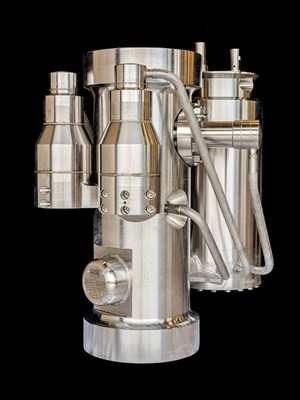New subsea wet-gas meter provides accurate production measurement in gas and gas/condensate fields

Some of the world’s most challenging environments for oil and gas production measurement today are in offshore gas and gas/condensate fields. Challenges include an increased operating range, fast-changing fluid compositions, and the need for more accurate and sensitive measurements over the life of the field. In many fields, measurement of water salinity also has become increasingly important, providing the reservoir engineer with information on the rates of hydrate, scale and corrosion inhibitors that need to be injected.
Furthermore, the presence of water breakthrough and water coning, and the dangers of hydrates, scale and corrosion, can have a devastating effect on well and pipeline integrity, and the field’s economics. With the current low oil prices and the need to maximize production, operators simply can’t afford to assume high risks of well integrity and production losses.
At OTC this year, Emerson Process Management will address these challenges and help operators bolster their production optimization strategies through the introduction of the new Roxar subsea wet-gas meter. The meter generates accurate production measurement information, reduces risk and improves flow assurance in gas and gas/condensate fields.
The Roxar subsea wet-gas meter comes with a number of specific benefits. First, the meter’s microwave-based measurements are able to detect changes in water content of the flowing well at as little as 0.2 ppm (parts per million)—sensitivity that has never been reached before. This water sensitivity and accurate hydrocarbon measurement are crucial not only for flow assurance purposes, but also for operators’ fiscal allocation obligations.
A new, multivariate analysis function also has been introduced to provide true PVT (pressure, volume, temperature) independence on water fractions, especially in high GVF (gas void fraction) flows. It is this combination of the new microwave system, with multivariate analysis, that allows for an improved uncertainty specification of ±0.02% abs WVF (water volume fraction) at GVF 99–100%.
The new meter also includes the industry’s first, dedicated, online salinity measurement system, indicating to the reservoir engineer whether formation water is entering the flow. Combined with sensitive water measurement, this provides an early detection of formation water breakthrough and the optimization of injection rates for methyl ethyl glycol (MEG), scale and corrosion inhibitors.
Finally, the meter is suitable for the changing operating conditions and varying fluid compositions seen in today’s gas and gas/condensate fields. Measurement speeds are at 20 times per sec, and immediate action can to be taken to protect subsea system integrity. Furthermore, introducing new microwave electronics that allow for transmission-based measurements, in addition to resonance, helps overcome operating range limitations, especially when liquid content and water content increase in the wet-gas flow. The new three-pin microwave probe allows for water-fraction measurements, even in the case of a high-loss medium (high liquid and water content) flowing through the meter.
To date, Emerson’s multiphase meters have been installed by 72 operators in 55 countries, in some of the world’s most challenging fields. These include Greater Gorgon field off Australia, in depths of between 200 and 1,300 m; Ormen Lange field on the Norwegian continental shelf; and West Delta Deep Marine field, offshore Egypt.
Through accurate hydrocarbons measurements, the early detection of formation water and reduced chemical injection, the dedicated monitoring solution will be central to operators’ future flow assurance, production optimization and hydrocarbon allocation strategies. ![]()
- Advancing offshore decarbonization through electrification of FPSOs (March 2024)
- Subsea technology- Corrosion monitoring: From failure to success (February 2024)
- Driving MPD adoption with performance-enhancing technologies (January 2024)
- Digital transformation: A breakthrough year for digitalization in the offshore sector (January 2024)
- Offshore technology: Platform design: Is the next generation of offshore platforms changing offshore energy? (December 2023)
- 2024: A policy crossroads for American offshore energy (December 2023)
- Applying ultra-deep LWD resistivity technology successfully in a SAGD operation (May 2019)
- Adoption of wireless intelligent completions advances (May 2019)
- Majors double down as takeaway crunch eases (April 2019)
- What’s new in well logging and formation evaluation (April 2019)
- Qualification of a 20,000-psi subsea BOP: A collaborative approach (February 2019)
- ConocoPhillips’ Greg Leveille sees rapid trajectory of technical advancement continuing (February 2019)


